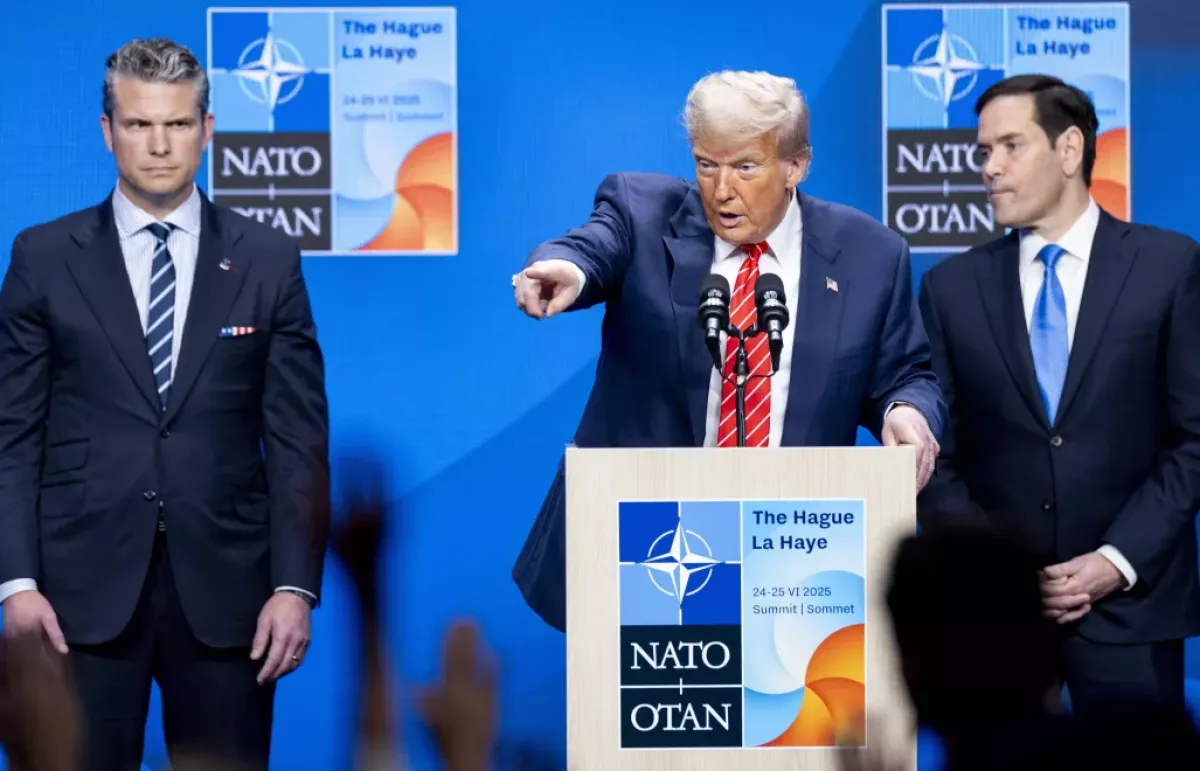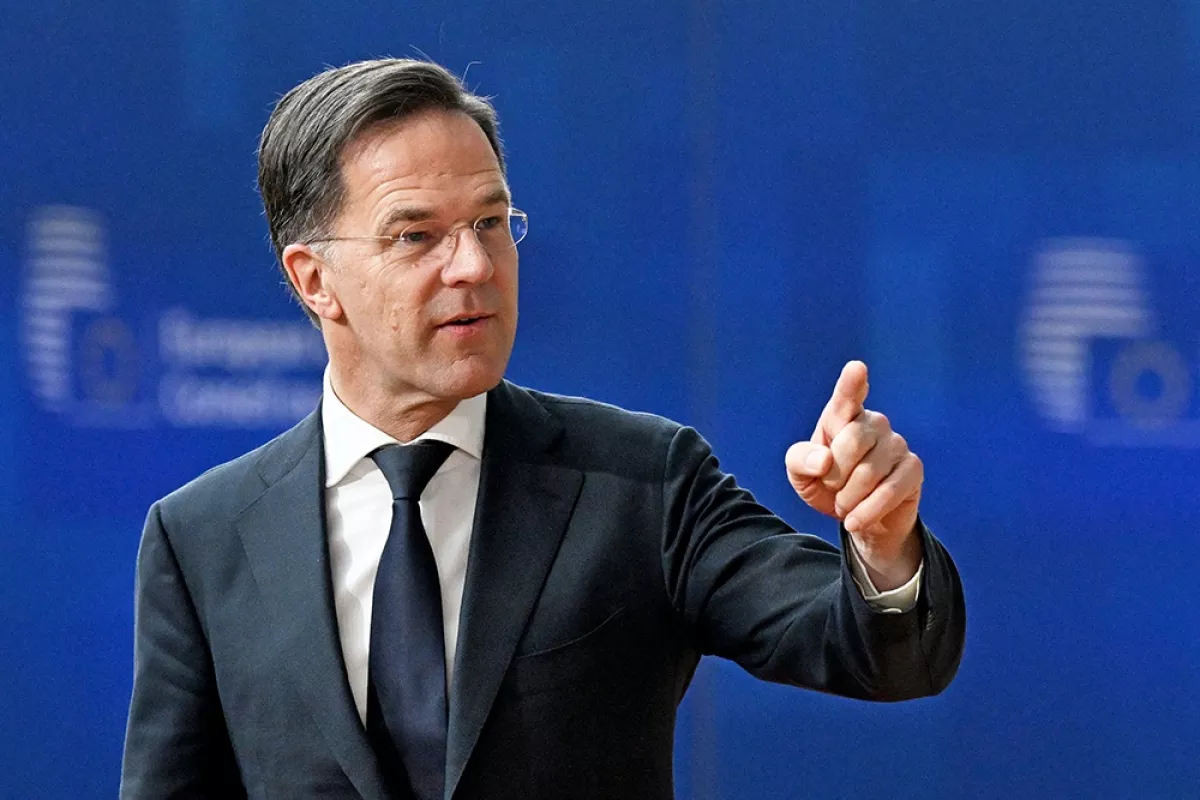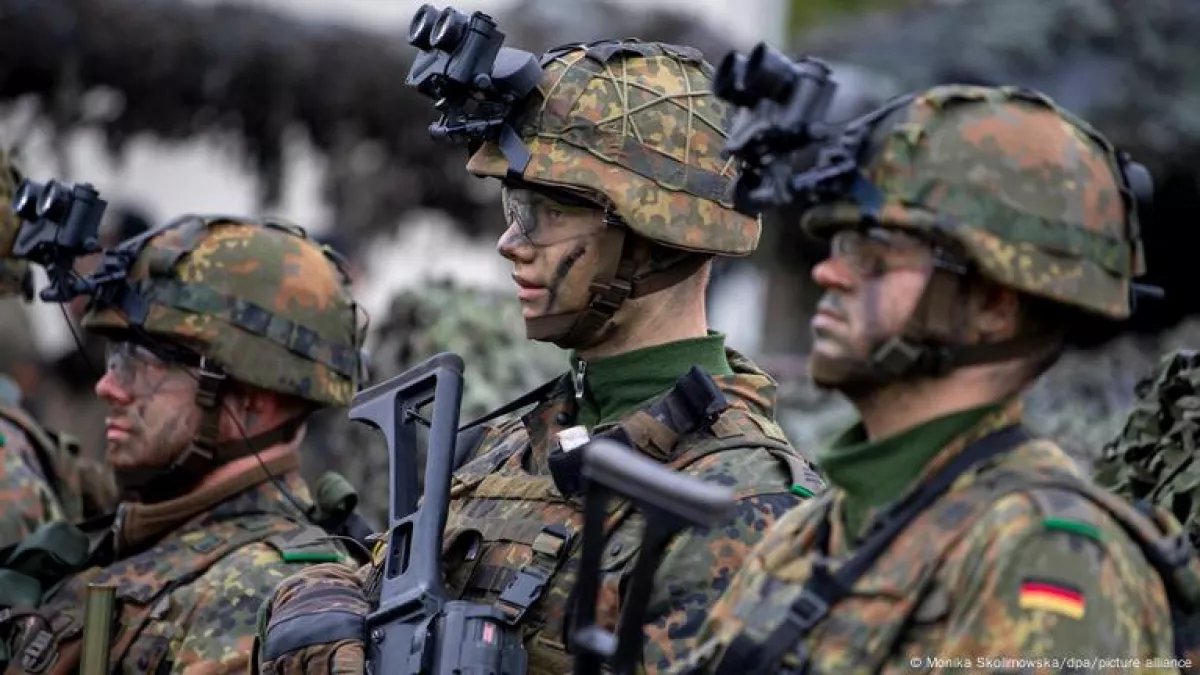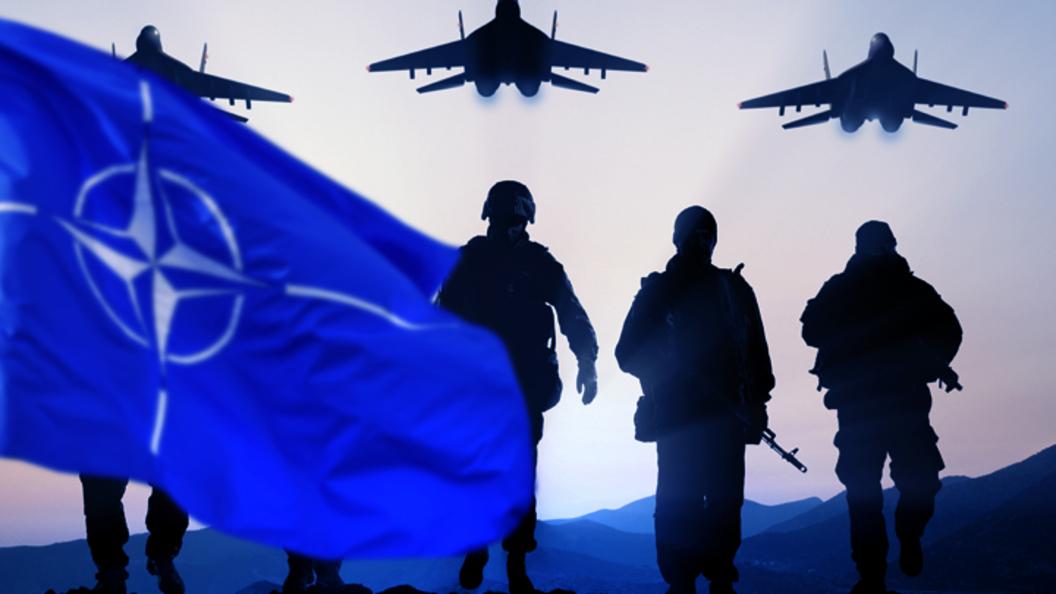Trump accepts NATO's capitulation “Europe is going to pay in a BIG way”
The U.S. President has forced European countries to revise their policies. They will have to dismantle parts of their socio-economic systems to fund military expenditures and scale back their ambitions regarding Ukraine. Shortly afterward, Hungary blocked the start of EU accession talks with Ukraine, and Slovakia vetoed the next package of sanctions against Russia. In response to Trump’s demands, European leaders could only muster a weak bluff—threatening to admit Canada into the EU and sign a military pact with Australia!
The EU and NATO’s role in global politics increasingly resembles a string of geopolitical escapades—adventures that are ushering in the collapse of the world order built by Western empires.
“24 hours of self-abasement” in The Hague
The NATO summit held on June 25 in The Hague looked less like a meeting of allies and more like Europe’s surrender. Leaders of countries with centuries-long imperial histories competed to impress Donald Trump. He, of course, hasn’t forgotten that these very people recently did everything they could to politically destroy him in the interests of their liberal allies in American politics. He also remembers how many of the summit’s participants clashed with him on precisely the same issues during his first presidential term. Which is why the U.S. President did not deny himself the pleasure of watching Europe’s liberals gush over him with extravagant flattery.

Even before the summit began, Trump posted an expressive personal message online from NATO Secretary General Mark Rutte: “Donald, you have driven us to a really, really important moment for America and Europe, and the world. You will achieve something NO American president in decades could get done. Europe is going to pay in a BIG way, as they should, and it will be your win.” As the saying goes, no further commentary is needed—except to note that Rutte conducted the summit in the same tone. The whole event resembled a modern re-enactment of ancient scenes depicting the triumphs of pharaohs or nations offering tribute to the Persian King of Kings.
Rutte, after all, had already gained a reputation during Trump’s previous presidential term for his willingness to please him—likely the very reason he was appointed Secretary General. Britain’s The Guardian described the Hague summit as “24 hours of self-abasement,” during which “without dignity, leaders fell at Trump’s feet in The Hague.”
Even before the summit officially opened, it became clear that the event had been drastically shortened—specifically to accommodate American participation. And there was certainly plenty to discuss: Ukraine, Iran, and China all weighed heavily on Western leaders. But there was a risk Trump wouldn’t come at all. And even if he did show up, he might leave early, bored by the tedious proceedings—leaving the organisers to deal with the resulting scandal. Just as he had done at last week’s G7 summit in Canada.
As a result, the NATO summit programme was tailored entirely around Trump. To avoid testing the patience of the transatlantic guest, the usual three summit sessions were cut down to just one—lasting a mere two and a half hours. The final communiqué was agreed upon well in advance and slimmed down to just five paragraphs. For comparison, last year’s NATO summit declaration in Washington consisted of 44 paragraphs.
The centrepiece of this year’s communiqué was NATO members’ agreement to meet Donald Trump’s demand of raising defence spending to 5% of GDP by 2032. There was nothing altruistic about it—behind the lofty rhetoric lay pure business and a redivision of spheres of influence. In the language of the U.S. leadership, NATO’s “increase in military spending” is simply a euphemism for Europeans purchasing more arms and equipment from the American military-industrial complex.
Notably absent from the communiqué were Ukraine and other topics that matter to Europe but are unpalatable to Trump. This omission may have pleased him—but it’s unlikely to sit well with European voters. Instead of debating major strategic issues involving vast sums of money, summit participants indulged in absurd flattery for the cameras. Even before the summit began, NATO Secretary General Rutte had made it clear there would be no discussion on increasing military expenditures—supposedly because the matter had already been decided. But that was not the case, and tellingly, even formal agreement couldn’t be extracted from Spain on the issue.

At the summit itself, Rutte openly proclaimed: “NATO defence spending has increased by a trillion dollars over the past ten years—and that’s thanks to you, President Trump. Thanks to you pushing us forward. Now, it will grow by trillions more.”
But against the backdrop of severe degradation in infrastructure, social services, and healthcare, the enthusiastic call to pour trillions more into war is unlikely to resonate with the majority of EU citizens. In today’s Germany—once prosperous—people desperately and fruitlessly search for drug-free schools and struggle to find a basic general practitioner. So news of another trillion “for war” all but guarantees greater support for anti-establishment parties.
Meanwhile, the liberal elites in power across the EU, along with their loyal media, have tried to explain themselves to citizens by claiming they actually “outplayed” Trump on two fronts. First, by pushing the 5% defence spending target out to 2032, with subtle hints that the commitment could be dropped as soon as Trump leaves office. And second, by tweaking the accounting method: of the 5%, only 3.5% would go toward actual weapons purchases, while 1.5% would be counted from infrastructure expenditures.
A strategic disaster looms on the EU–NATO horizon
Trump’s attitude toward the alliance is unlikely to have improved after watching European politicians try to flatter him—especially considering many of them had previously tried to destroy him politically, and are now whispering behind his back about ways to cheat the deal. NATO Secretary General Rutte insisted that the U.S. remains “totally committed” to Article 5—the clause that guarantees automatic military support if a member is attacked.
Yet en route to the summit, Trump once again said there are “different interpretations” of Article 5. His statements in The Hague on the subject were highly ambiguous—and deliberately so.
These are not theoretical debates. By investing heavily in confrontation with Russia and severing ties with it, Europeans had banked on one key assumption: that even if things went wrong—if, instead of receiving Russian reparations and expanding their sphere of control eastward, they were forced to fend off an enraged Russia and settle for modest Ukrainian gains—the Americans would still “cover” them under the obligations of Article 5.
Now, the problem is no longer just the current U.S. administration’s creative reinterpretation of that article. Washington simply wants no part in the Ukraine-centred schemes of Europe’s liberal elites. As Hungarian Prime Minister Viktor Orbán bluntly put it: “The fact that President Zelenskyy is not participating in the NATO summit in any official way is the main sign that the previous chapter has ended. The US, Türkiye, Slovakia and we have made it clear that we do not want to sit at the same table with Mr. Zelenskyy when it comes to NATO.”
Trump has no desire to get dragged into an Eastern European meat grinder on NATO’s behalf.

Without the United States, Europe is simply not capable of managing a confrontation with Russia—especially now, as the very dual structure of the EU and NATO begins to fracture. This structure, whose parallel and interconnected functioning once enabled the European arm of the collective West to expand, has now driven it into a strategic dead end.
The reasons go beyond the increasingly ideological agenda of the European establishment. A significant factor has been the ability of certain structurally weak and strategically marginal states—admitted into the EU and NATO over the past quarter century—to exploit either NATO mechanisms or the machinery of the EU for their own narrow interests. It is precisely this ability of minor players, contributing minimal resources to NATO while leveraging the bloc for their own agendas, that so irritates Trump’s current team.
Yet this very practice—along with doctrinaire thinking—has long dominated both NATO and the EU. As a result, the two organisations are now riddled with contradictions that are rapidly turning into deep fissures. And it’s not just Spain. Despite intense pressure, Madrid refused to support the decision to raise NATO military spending. Prime Minister Pedro Sánchez, recognising the real threat such spending poses to Spain’s long-term development in the absence of immediate dangers, proposed a compromise figure of 2.1% of GDP. NATO Secretary General Rutte flatly rejected the offer. During the official group photo in The Hague, Sánchez stood demonstratively apart from the other leaders—a quiet but clear act of dissent.
But the fact remains: in recent months, it’s not just France and the UK that have begun contemplating the creation of a new military-political alliance—a kind of "New Entente" that would include Poland. The Balkans are also moving in the same direction. In March, Croatia, Albania, and Kosovo signed what is effectively a military alliance, prompting Serbia to threaten the creation of its own defence pact with Hungary.
Germany, too, is clearly preparing to assert its own course. On June 24, it was revealed that Berlin is rapidly ramping up funding for its military. This year, the official budget for Germany’s armed forces stands at €62 billion—and when extra-budgetary allocations via the Bundeswehr’s Special Fund are included, the figure reaches €86 billion. By 2028, that number is projected to climb to €136.48 billion, and in 2029, to €152.83 billion.
Germany is completing the deployment of its brigade in Lithuania, shifting naval assets toward the Baltic, and actively seeking new avenues for projecting force in Eastern Europe. All signs point to a revival of German ambitions—ambitions that are already beginning to collide with those of Poland. Historically, the two powers have vied for dominance over Lithuania and the Baltic coast. In recent years, Warsaw has invested heavily in building its own military bloc alongside Lithuania and other regional partners.

In other words, divisions are deepening—and no real solutions are in sight. Against this backdrop, in what amounts to a damning verdict on NATO’s current condition, Italian Defence Minister Guido Crosetto recently declared: “There is no longer any reason for NATO to exist. Once, the centre of the world was the Atlantic Ocean—now it is the entire world. NATO must either become an organisation that fulfils the mission of maintaining peace and collective security through engagement with the Global South, or we will fail to achieve our goal: security under rules that apply equally to all.” In his view, it's time to build relationships with all countries—not just the United States and Europe.
European nations might have been able to address some of the problems arising from their dependence on the U.S.-led NATO—if they had a functioning military structure within the EU framework. But they do not.
Dangerous atavisms
NATO remains stuck in the mindset of its Cold War confrontation with the USSR and its allies—and to this day, it tries to portray modern-day Russia as some reincarnation of the Soviet Union. The tragedy of liberal Europe is that NATO was never dismantled after its rival, the Warsaw Pact, dissolved. History has shown that NATO is incapable of anything beyond some form of confrontation with Russia.
In fact, NATO has failed in every other mission it has undertaken—even in occupations and counter-insurgency efforts in Afghanistan and Iraq, let alone its half-hearted attempt to intervene in Libya without American support. Its only real “success” has been recreating the geopolitical constellation for a new Cold War.
And notably, the issue of increased military spending has played a crucial role in reviving NATO’s familiar Cold War constellation. Long before the Russia–Georgia war, NATO had already begun ramping up defence budgets. As early as 2006, NATO defence ministers adopted a policy aimed at gradually increasing minimum annual military spending to 2% of GDP—a provocative move in itself, largely driven by newly admitted Eastern European members of the alliance.
This step gave momentum to the resurgence of Cold War dynamics—yet paradoxically, it did not lay any real groundwork for a decisive or successful Western confrontation with Russia and its allies. Having made such a dangerous commitment, NATO countries found themselves paralysed just a few years later when Georgia, freshly promised future NATO membership, clashed with Russia. At that moment, NATO leaders could muster only vague statements criticising the “disproportionate use of force” by Moscow—offering no real support to Tbilisi.
By the time Trump first entered the White House, only five of NATO’s then-27 member states had met the 2% spending target. These were mainly small, strategically marginal Eastern European countries—achieving that goal largely by increasing national debt and receiving what were effectively EU subsidies. During his first term, Trump managed to push that number up to ten, including the United States itself. Now, under renewed pressure, the number of NATO members allocating 2% of GDP to defence has grown to 23 out of 31.

In other words, in entering into confrontation with Russia, the EU–NATO countries have not only abandoned their own allies, but have also failed to ensure they possess the actual capability to back up their bold rhetoric with concrete action. Even those states most vocal about their supposed readiness to sacrifice everything in a war against Russia have shown remarkably little in terms of actual preparation. A telling example is the years-long, still incomplete construction of the so-called “Rocade Road” along the Baltic—an ambitious logistical project that now appears to be quietly winding down amid rumours of its cancellation.
The truth is that NATO isn’t just incapable of doing anything other than confronting Russia—it isn’t even capable of actual armed conflict with Russia. What it is capable of is limited to a prolonged cold war, nothing more.
To be fair, NATO’s adversaries are not without problems of their own. This week, Armenian Deputy Foreign Minister Vahan Kostanyan issued what amounted to an ultimatum to Moscow. Hinting at Armenia’s potential withdrawal from the Collective Security Treaty Organization (CSTO), he told reporters: “If our CSTO partners fail to make political statements about what was promised years ago following attacks on Armenia’s sovereign territory, then Armenia will take final decisions.” Much like NATO, the South Caucasian arm of the CSTO now resembles a political fossil. But whereas NATO is a Cold War relic, the CSTO in this region is a remnant of the Soviet collapse—rooted in the Gorbachev-era policy of binding Armenia to Russia by enabling Armenian nationalist aggression in the region.
In conclusion, it’s worth noting that both the collective West and Russia are enjoying an extraordinary stroke of luck: neither currently faces serious global competition. This is clearly reflected in the latest developments within non-Western blocs like the Shanghai Cooperation Organisation (SCO) and BRICS. The SCO defence ministers' meeting held on June 26 in Beijing ended without a final declaration—blocked by India, which the West is increasingly relying on to undermine China’s “peaceful rise” by pushing it into regional confrontation. Just prior to that, it emerged that Chinese President Xi Jinping will, for the first time, skip the upcoming BRICS summit in Brazil—reportedly due to tensions with India. And it has also become known that Russia’s president will likewise not attend.
Yet, given the West’s persistent refusal to build genuinely equal partnerships even within its own ranks—as starkly illustrated by the NATO summit in The Hague—let alone pursue respectful cooperation with non-Western states, it may ultimately force its opponents not only to engage with one another, but to consolidate. Under Western pressure, countries like Russia, China, Iran, and North Korea are now cooperating more closely than ever before. Meanwhile, only a handful of Western politicians—such as the aforementioned Italian defence minister—are beginning to draw meaningful lessons from the failures of Western policy.








